
Never stop learning
With age comes wisdom, and with homeownership comes home maintenance! The real trick is combining your wisdom with your home maintenance. Here are 50 tricks to pull it off.
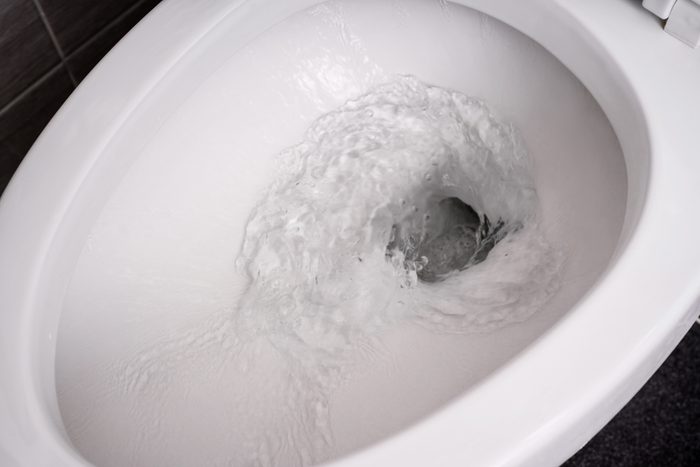
How to flush the toilet when the power’s out: flush with a bucket
Even if a power outage stops your well pump or the city water supply, you can still flush the toilet. Dump a couple of gallons into the bowl or fill the toilet tank. This works just as well as the usual flush, but won’t refill the bowl. Find out more ways every smart homeowner prepares for a power outage.
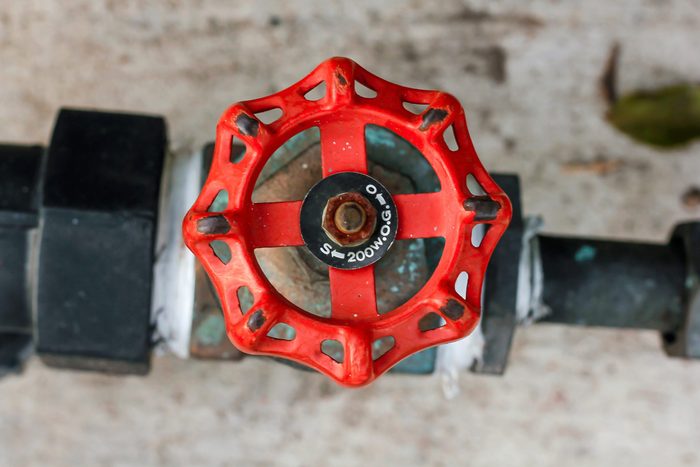
Locate your main water shutoff valve
In warm climates, the main water shutoff is typically outside, attached to a wall or underground. In colder climates, the main water shutoff is typically in the basement. There is also a “curb stop” shutoff that requires a special tool to operate. This one’s essential, but do you know these home maintenance tasks you can skip?

Find your property lines
Iron stakes mark property lines in most communities. They’re typically located at corners and places where property lines meet. To get started, request a plot plan from city hall. You may be able to find the stakes by dragging a rake over the suspected location. But more likely, the stakes will be several inches underground. In that case, your best bet is to buy or rent a metal detector (inexpensive ones cost less than $40). When you’ve found your target, dig to make sure that it’s really a stake and not just a lost quarter.

Deal with drainage
Water has the potential to cause problems in any home, and the skills to deal with drainage issues can be a huge money saver in the long run. Extending downspouts is an easy fix, but knowing how to make a drainage plan is going to provide long-term results for minimal effort. Do you know what things you should never put down the drain?
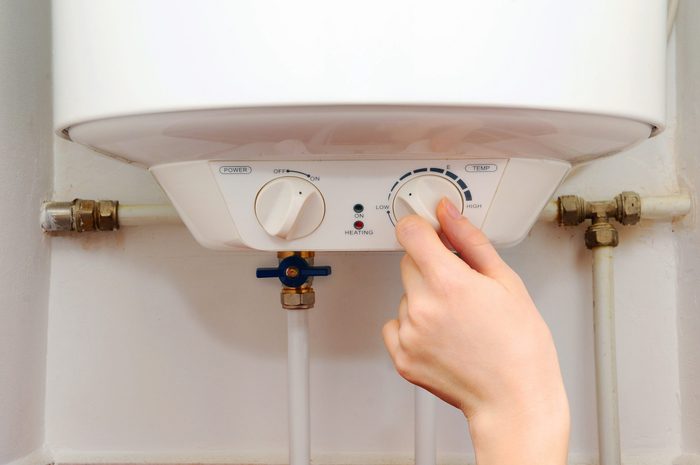
Adjust your water heater
If you’ve ever taken a vacation without adjusting your water heater, you’ve already lost money on this easy-to-master homeowner skill. While finding the large dial shouldn’t be hard (it’s usually at the base of your water heater), finding the correct temperature may be. When going away on holidays, turn your water temperature down to avoid the need to maintain the temperature of the whole tank while you’re away. Just don’t forget to turn it back up when you get home! Here are some other useful plumbing tips.
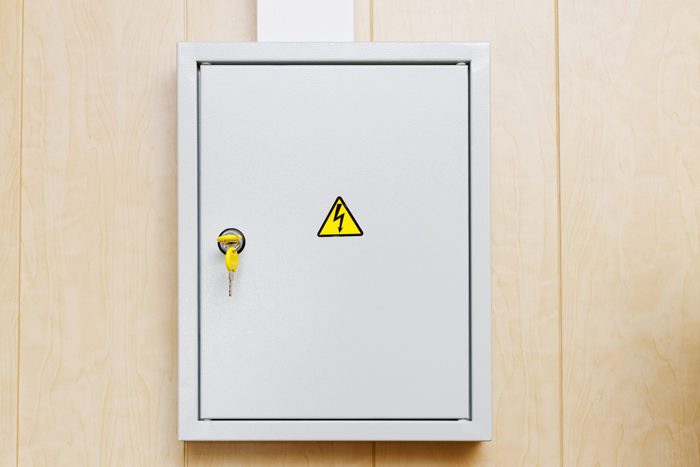
Understand your electrical system
Electrical overloads are easily created but can be incredibly dangerous for your home and everyone in it. A solid understanding of how the electrical circuits in your home function will not only make you a master homeowner, it will allow you to make as many DIY improvements as you want while maintaining the integrity of your electrical system. Plus, watch out for these silent signs your house has a serious electrical problem.
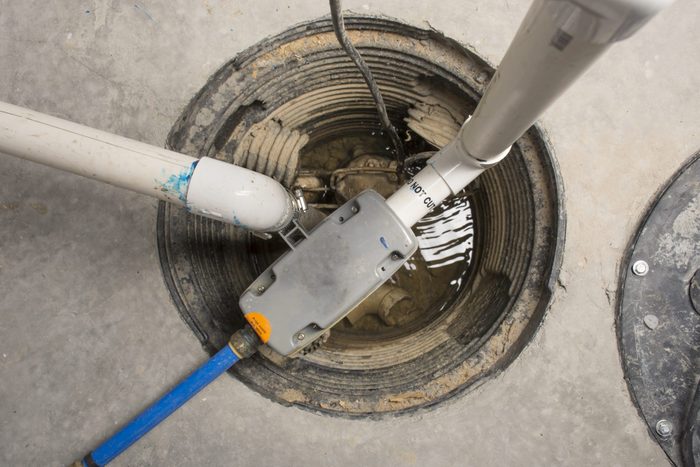
Test the sump pump, or risk a flood
It’s easy to forget about your sump pump, but it’s important to make sure it’s in good working order. If you don’t, you could end up like the homeowner who returned from a weekend trip to discover his entire basement floor covered in 1/2 in. of water. After shutting down the power, he waded over to the sump pump and noticed it wasn’t working. Upon closer inspection, he realized that the cable attached to the float must have gotten tangled somehow. It took him two seconds to untangle the cable, and then he spent the next 15 hours dragging out waterlogged carpet, running the wet/dry vac, and moving fans around.
To avoid a similar disaster, be sure your pump has a vertical float switch. Also, check your pump at least a couple of times a year by dumping water into the basin to make sure everything is working properly. These other plumbing nightmares will make you cringe.
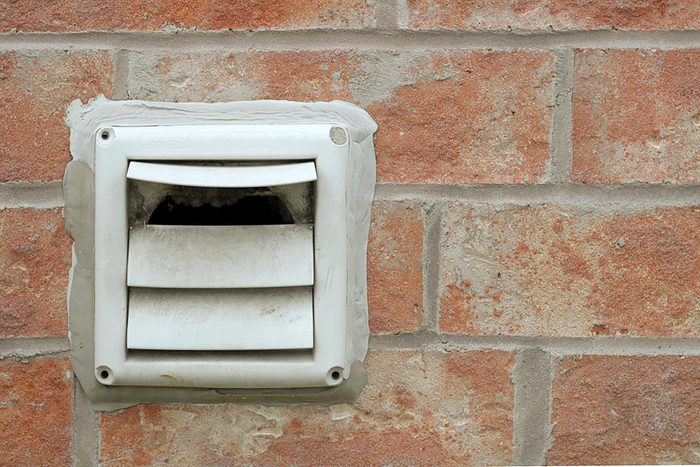
Clean dryer vents or waste energy and risk a fire
A plugged dryer vent will cause your dryer to run inefficiently, and that’s bad. A plugged dryer vent could also cause a house fire, and that could be deadly! Dryers that are centrally located in houses are most prone to plugging because of the longer ducts. Excess lint is only one reason ducts get clogged; nesting pests and stuck exhaust hood flappers can also cause backups. Stronger odors and longer dry times are two signs your vent is plugged.
You’ll have to remove the vent from the back of the dryer to clean it. Suck debris from the ducts with a wet/dry vac, or clean them out with a cleaning kit that includes a brush on a long flexible rod that attaches to a power drill. These kits are available at home centers. If your ducts need replacing, get smooth metal ducts, which will stay cleaner longer than the rough corrugated surface of flexible ducts. Avoid plastic ducting altogether; it can be a fire hazard. Keep your dryer in working order by learning about these things that should never end up in your dryer.

How to stop under-the-door air leaks
If you can feel the breeze and see daylight under your entry door, it’s costing you big-time. It also means you need to adjust your door threshold or install a new door sweep. Door sweeps start at $10. The hardest part about installing or replacing them is usually taking off the door.
Start by adjusting the threshold. Newer versions have screws that raise and lower them. Turn all of the threshold screws until the door opens and closes without much drag and any draft is eliminated. If that doesn’t work, or your threshold doesn’t have adjustment screws, replace the door sweep.
Close the door and pop out the hinge pins with a pin punch to remove the door. Set the door on a work surface and remove the old door sweep. Caulk the ends of the door, then install the replacement sweep. Some sweeps are tapped into place and stapled along the door bottom; others are screwed to the side along the door bottom.
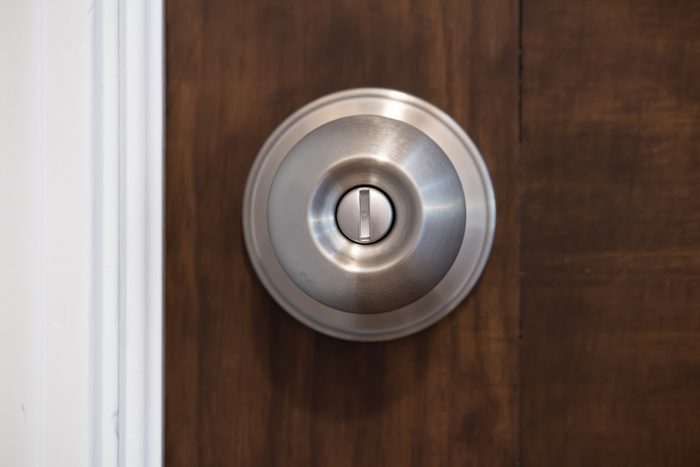
How to fix a loose doorknob
There’s nothing more annoying than a loose doorknob. On an external door, you might even end up locked out! Fortunately, it’s an easy fix. Just pop off the cover plate and then all you need is a screwdriver. Here are some other easy home repairs that anyone can do.
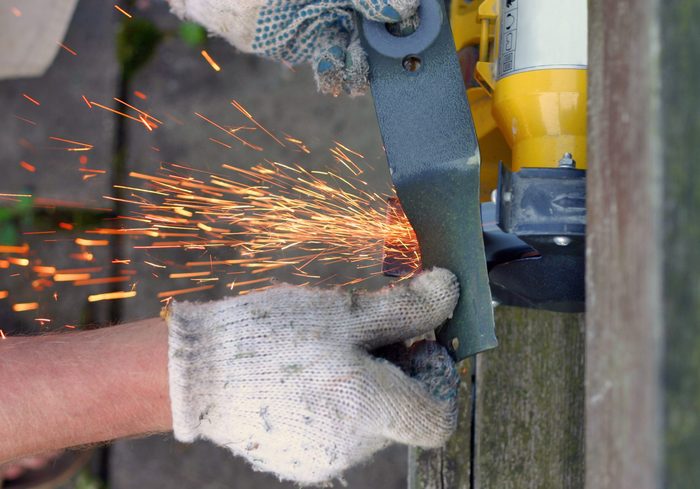
How to sharpen lawnmower blades
The hardest part about sharpening a lawnmower blade is detaching the blade safely from your lawnmower. Once the blade is safely removed and held in a vise, a good file is all you need to add an edge to the blade. Just remember to make sure that you are sharpening the right side of the blade! When detached, it can sometimes be difficult to tell which way the sharpest edge is facing.
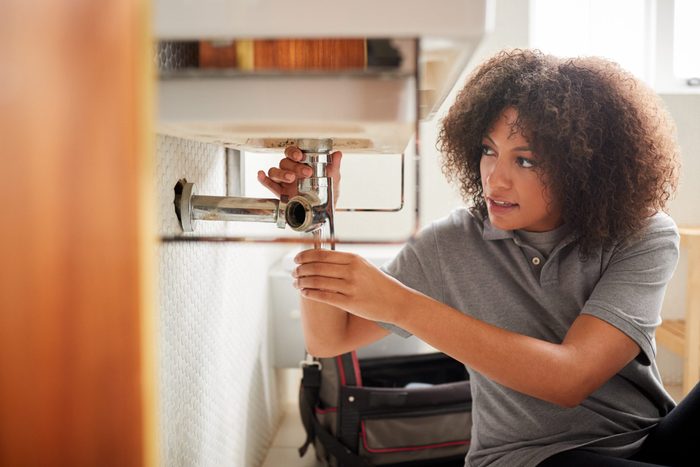
Loosen stuck pipes with heat
When a threaded connection won’t budge, heat sometimes does the trick, especially on ancient connections that were sealed with pipe dope that hardened over time. A hairdryer works well for this purpose, but you’ll have to be patient. Getting the metal hot enough can take a couple of minutes. Protect nearby surfaces with a flame-resistant cloth. This method is for water and waste pipes only, never for gas or fuel lines.
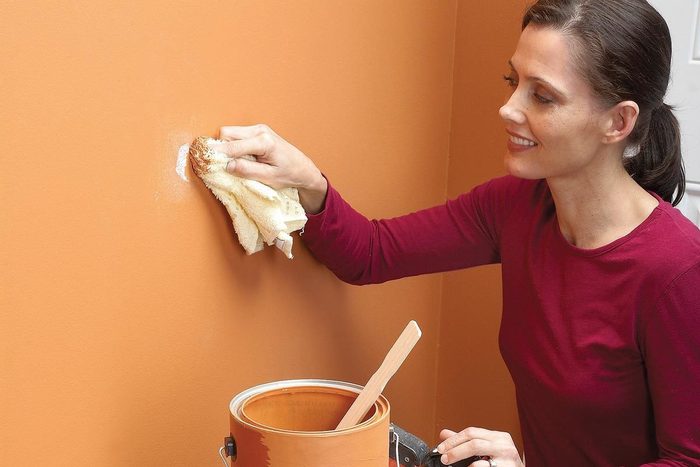
Touch-up without cleanup
No need to mess up a brush to fix a wall wound. Just dip an old washcloth in the paint and throw it away when you’re done. A washcloth leaves the same texture as a paint roller, so your repair will blend nicely.

Don’t choose a problem tree
You’ll be living with this tree for a long time, so make sure you plant one you won’t grow to detest in a few years. Trees to avoid include messy mulberries, stinky female ginkgoes, and cottonwoods, which have invasive root systems. Before you buy a tree, research its benefits and potential negatives so you won’t resent it later on. Contact your local extension service for a list of recommended trees for your area.
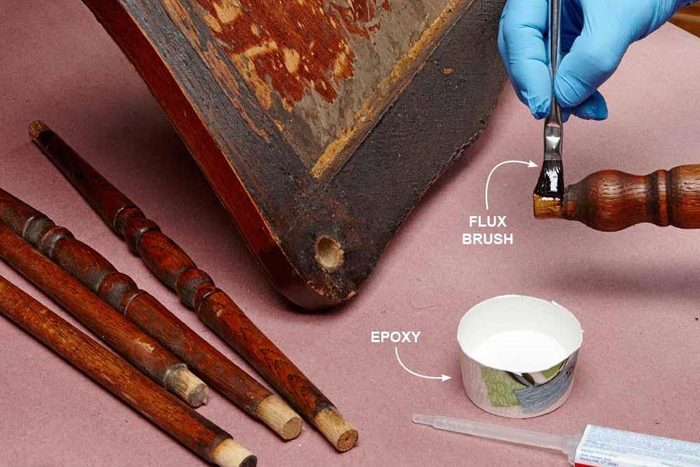
Fix loose joints with epoxy resin
Epoxy is one of the few adhesives that can fill gaps without losing strength. That’s why it’s perfect for repairing loose-fitting joints in furniture. If you have only one or two repairs to make, buy a small quantity of epoxy in a double syringe at a home center or hardware store. Read the instructions on the label and make sure the epoxy is formulated for wood repairs.
Brush a layer of epoxy onto both parts to be joined. Assemble and clamp the parts if necessary. Then wait the specified time for the epoxy to set up. Read the instructions to determine how long the epoxy should cure before you use the furniture. Even five-minute epoxy may take an hour or more to reach full strength. If you’re repairing a valuable antique, you may want to avoid epoxy repairs because the result is irreversible—best to contact an expert!
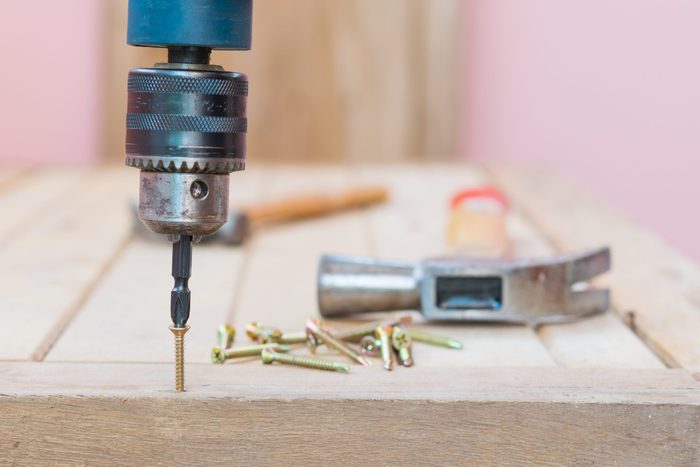
Fix a loose screw
This is an old carpenter’s trick. If you have a screw hole that’s too big, just wrap a bit of steel wool around the screw before you drive it in. It provides just enough friction to hold the screw firmly in place and takes less futzing than trying to fill a hole and re-drill.
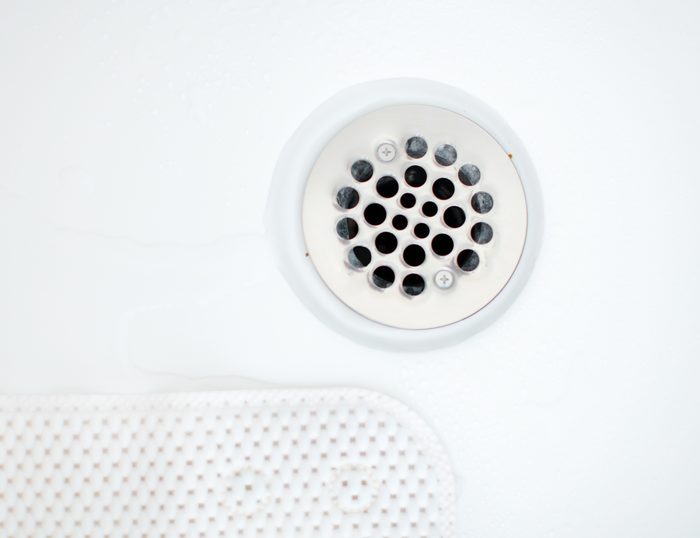
Suck out drain clogs
A wet-dry vacuum slurps clogs out of plugged drains. Even plumbers use this trick sometimes. If you need to increase the suction, seal around the nozzle with a wet rag. Here are 10 other places you’re probably not vacuuming—but should be.
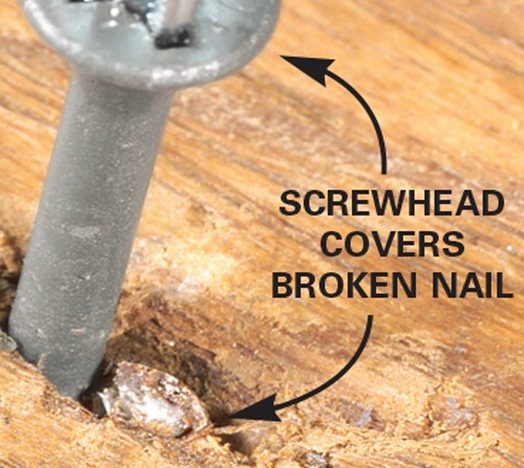
Replace loose, popped nails
Decking swells and shrinks as it goes through repeated cycles of wet and dry seasons. This frequently causes nails to loosen and pop up above the deck boards. You can drive them down again, but chances are that’s only a short-term solution. They’ll probably pop up again after a few years. The long-term solution is to remove the popped nails and replace them with deck screws from your local hardware store.
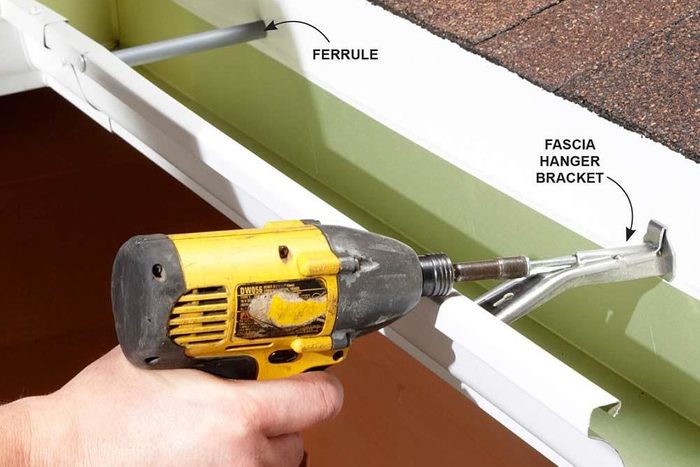
Loose gutters
Years ago, spikes and ferrules were a common method for hanging gutters. They do the job all right, but eventually, the spikes work themselves loose. Pounding them back in is a temporary fix at best. One way to make sure your gutter doesn’t fall off the house is to install fascia hanger brackets. Installation is simple: Just hook the bracket under the front lip of the gutter, and then screw the other side of the bracket to the fascia. Leave the old spikes in place—a spike head looks better than a hole in the gutter.
If your shingles overhang your fascia by a few inches or you have steel roofing, buy the brackets with the screws built in (the type shown here). They cost more, but the head of the screw remains a couple of inches away from the fascia, making them a lot easier to install.

Refrigerator
From replacing the door gasket to changing the lightbulb, many refrigerator maintenance tasks can be done at home. Cleaning the condenser coils and fan regularly, especially if you have pets (their hair can easily clog up the coils) will lengthen the life of your fridge and save you money. These coils keep your fridge cool by releasing heat. When they’re clogged with dust and debris, they have to work harder, which uses more energy. It’s also important to keep your fridge setting between 38 and 42 degrees F, and the freezer, between 0 and 10 degrees. With a bit of regular maintenance you should be able to avoid most repair calls. But it’s important to know what to look for: Watch out for these signs your refrigerator is about to die.
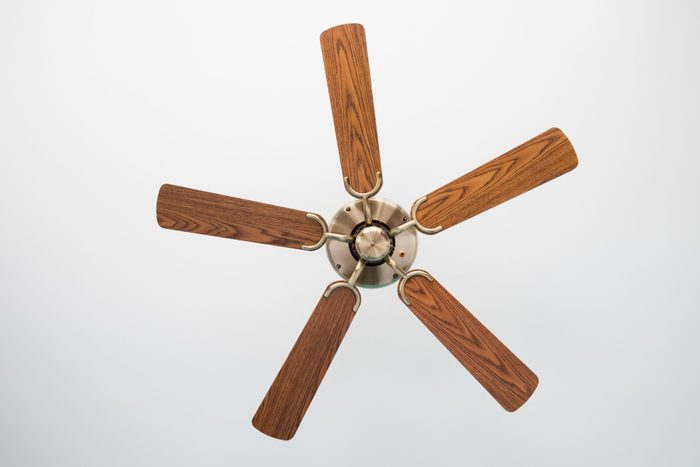
Fix a wobbly ceiling fan
Ceiling fans often wobble for reasons other than balance. Although a slight wobble (1/8 in. on high) is normal, anything more than that is annoying and potentially dangerous.

How to change locks
Unfortunately, lost keys are a part of life. But why waste money on a locksmith when you can re-key a lock yourself? Buying a re-keying kit (specific to your lock brand) means you can change your locks by removing the cylinder and adjusting the pins, and never worry about the cost of a new lockset again. Always losing your keys? Find out how to unlock your car door without your keys.
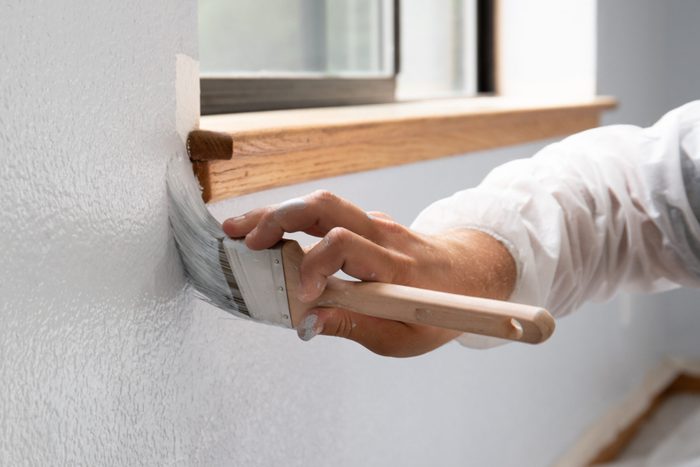
Paint like a pro
The ability to do a good paint job is a skill that, once learned, will save you gobs of money over the course of your homeownership. While it takes patience and detail, fresh paint can make your home seem larger, cleaner and more modern—not too bad for a few brushes, paint and a weekend or two. You can even do a great paint job using items you probably already own!
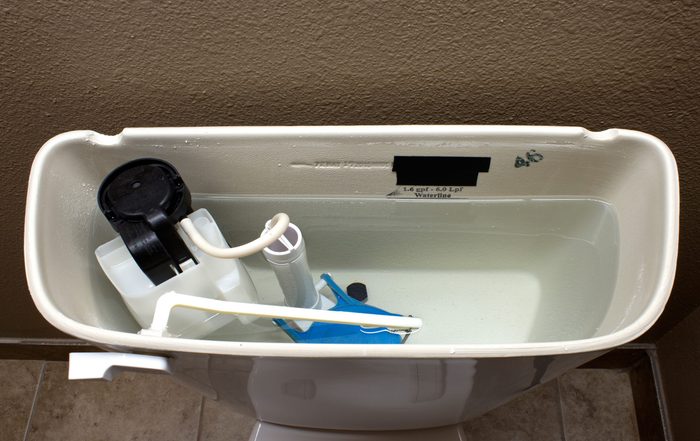
How to fix a running toilet
It is pretty easy to fix a running toilet, with the benefit that the fix will not only give your toilet a stronger flush, it can lower your water bill: a win-win!
A common cause of a toilet running is a flapper that doesn’t seal. If water from the tank seeps around the flapper and into the bowl, the flapper is no longer working correctly. Flush the toilet and look for a fill valve leak. Lift up on the toilet float arm when the tank is filling to see if the water stops. Bend or adjust the toilet float arm so the tank stops filling when the water level is 1/2- to 1-in. below the top of the overflow pipe. If the fill valve still leaks, replace it. You’ll regret ignoring these other toilet problems.

How to fix squeaky floors
Silence those squeaky floors! If your floors are squeaking, chances are it’s an easy fix from below. Gaps between the joists and subfloor can cause squeaks. Just fill the gaps, and squeak begone!
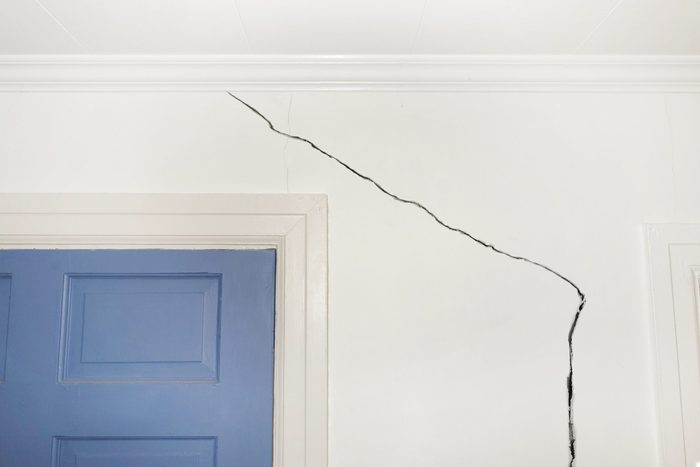
How to fix a crack in drywall
It doesn’t matter if your child’s basketball got away from them or you nicked the wall moving a piece of furniture—at some point, you’ll be faced with a crack in the drywall. You’ll need a taping knife and utility knife, along with some drywall tape, pre-mixed joint compound and setting type compound to fix the crack so it doesn’t come back.

How to fix cracked grout
Even the best tile jobs will succumb to cracking grout at some point. If the grout between your bathroom floor tiles is crumbling, there is a quick fix that will save you from tearing up the floor and starting over. Your best bet is to replace the grout by removing and vacuuming the old grout, and re-caulking the tile.
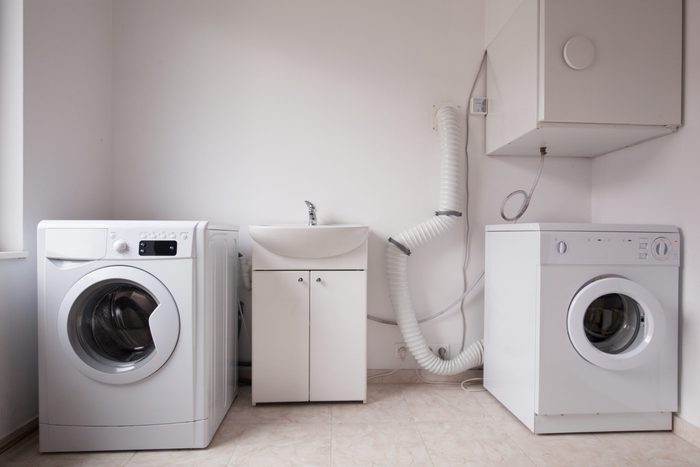
How to fix an unbalanced washing machine
You threw a heavy load of towels in the washer and now it’s unbalanced. With a level, pliers and a pry bar, you can have the washer balanced again in five minutes. Watch out for these signs your washing machine is about to die.
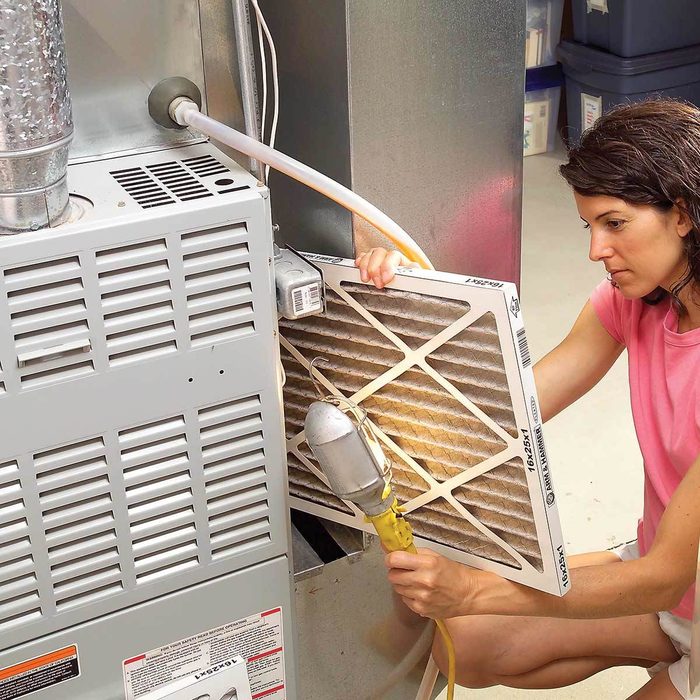
HVAC
Annual maintenance wards off many HVAC problems. If you do have a failure, you can usually fix it yourself. If your AC unit is working but has become noisy, you can fix that, too!
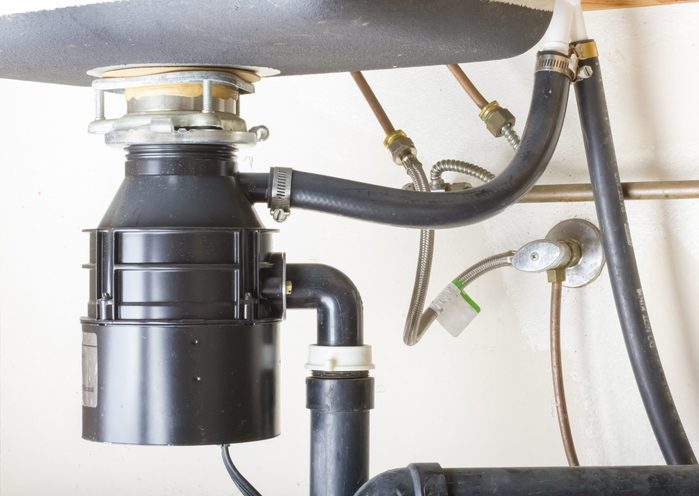
Garbage disposal repair
A garbage disposal is a bit scary when it’s turned on and the blades are noisily chopping up kitchen waste. But, if your disposal gets stinky, fear not. It’s easy to clean out the gunk and get rid of the smell. If the splash guard needs replacing, you can do that in 20 minutes! If you need to replace the entire disposal, it’s easy to replace it yourself.
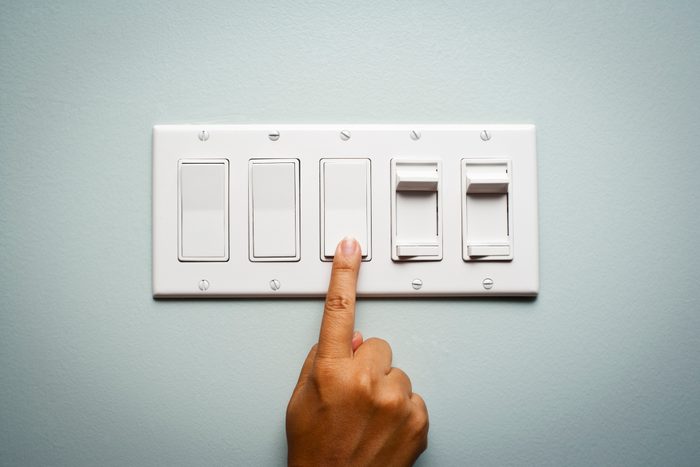
Light switches
Don’t automatically avoid a project just because it involves electricity: Replacing a standard light switch with a dimmer switch is a very doable DIY project, as is replacing a three-way switch.

Decks
Many things can go wrong with a deck. Missing screws, warped boards, squeaky nails, wobbly railings, fortunately, many of these problems are well within the scope of the average DIYer. Inspect your deck for common deck problems (securely fastened to the house, missing nails, rotting posts, and wobbles) and then repair whatever needs fixing. Find out some more things all smart homeowners do once a year.
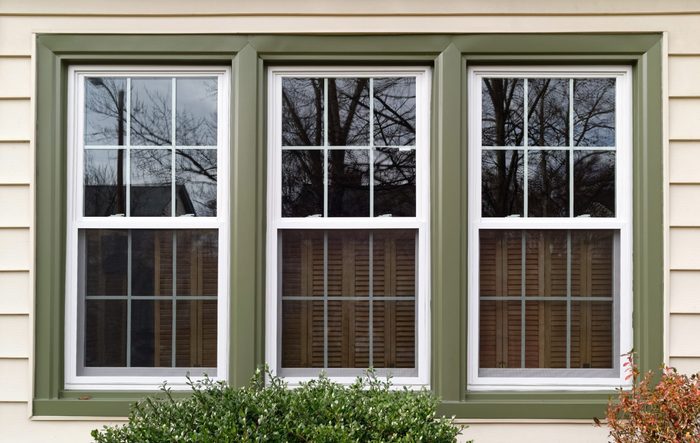
Fix windows
Obviously you can’t glue broken glass back together. But, for windows that get stuck, let in drafts or have moisture issues, there are DIY solutions. You can also stop window drafts and learn how to avoid and remove window condensation.
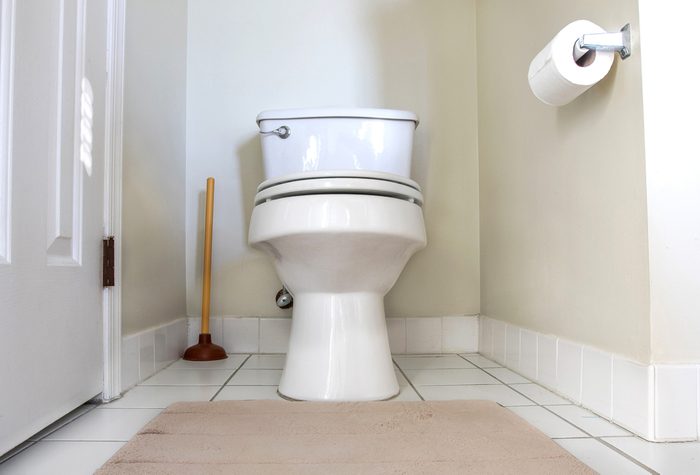
How to replace a toilet
Whether you’re installing a better-flushing toilet or resetting the old one after remodeling, a few DIY home improvement tips will help you do it faster and with fewer problems.
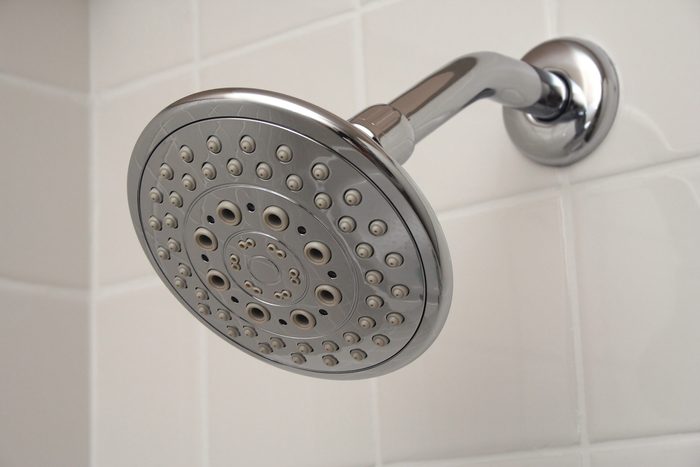
Foam a loose showerhead
Here’s an easy home fix that can be used beyond the bathroom. Fix a wobbly showerhead, or any wobbly pipe, with a few squirts of expanding foam. The foam encases the pipe in the wall and locks it into place, eliminating the wobble, so your showerhead will work like new. Can you think of an easier home fix?
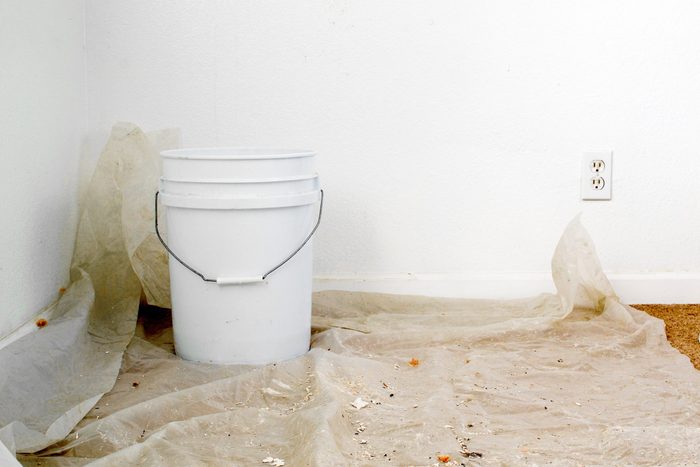
Solution for a small leak
Some roof leaks are tough to locate. Sometimes the water shows up at a ceiling spot distant from the leak. If your ceiling has a plastic vapor barrier between the drywall and the attic insulation, push the insulation aside and look for flow stains on the plastic. Often water runs to openings in the vapor barrier, such as at ceiling light fixtures.
If you can’t see any telltale flow marks, and since the stain is fairly small, look at the underside of the roof for ‘shiners.’ A shiner is a nail that missed the framing member, in this case when the carpenter nailed the roof sheathing to the rafters. Moisture that escapes into the cold attic from the rooms below often condenses on cold nails. Sometimes you can spot this if you climb up into your attic on a cold night. The nails will look white because they’re frosted. When the attic heats up a bit during the day, the frost melts and drips, then the nails frost up at night again and so on. The solution is to simply clip the nail with side-cutting pliers.
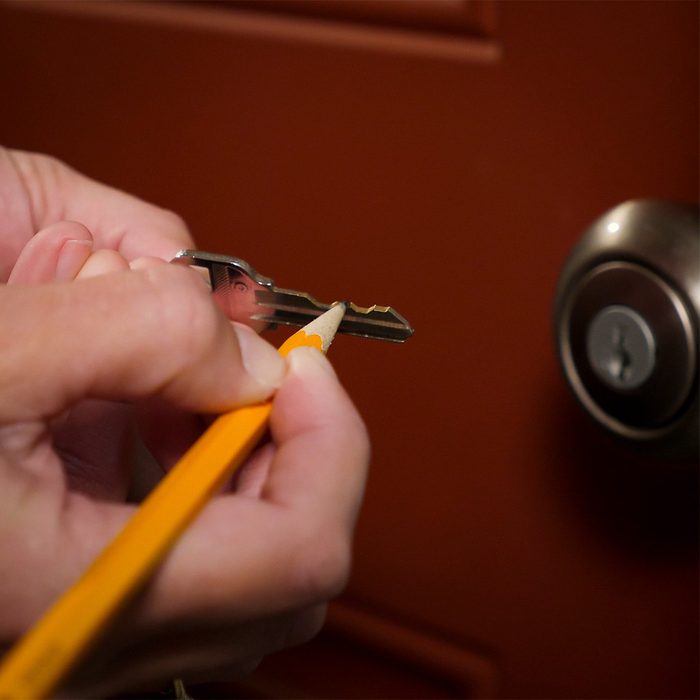
Lubricate a lock with a pencil
Don’t give up on a sticky lock, you can fix it with a pencil! Simply rub the teeth of your key with the pencil, coating it generously with graphite. Insert the key in the lock, which will deposit the lubricant inside. Repeat as needed until the key glides in smoothly.
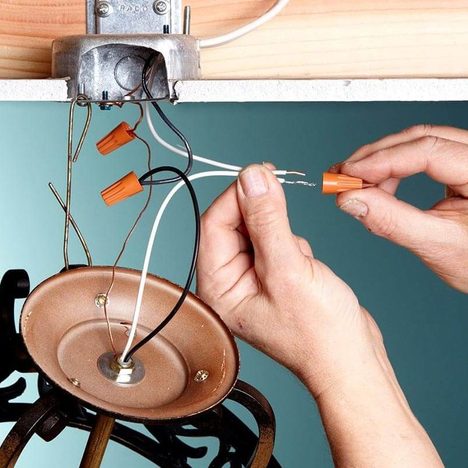
Fix a broken light fixture
Replacing a light fixture is one of those DIY jobs that’s theoretically quick and simple, but to be extra safe, as well as turning off the breaker you’ll need a non-contact voltage detector to make sure no electricity is flowing. First, educate yourself by reading these myths about electricity.
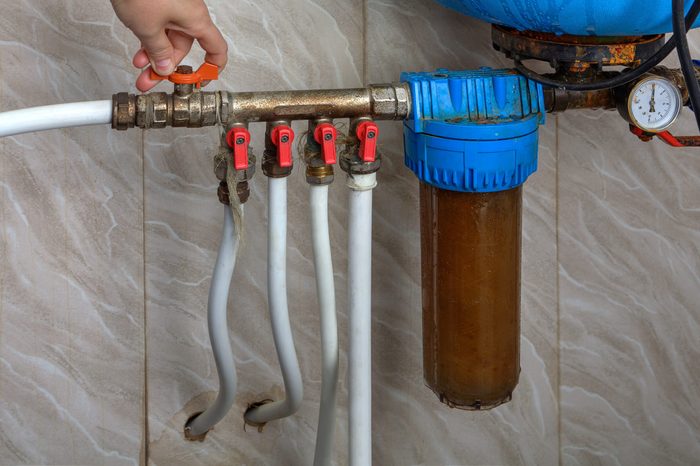
Fix a shutoff valve
There’s nothing worse than starting a sink or toilet repair only to find that the shutoff valve won’t shut off. Some shutoff valves are easy to replace. For those that aren’t, turn off the main water valve, remove the packing nut, and then unscrew the stem and take it to the hardware store to find a replacement washer. Clean any grit out of the valve body and pop on the new washer. The valve will work like new.

Air filter
It is often a homeowner’s first instinct to contact an HVAC tech when they notice irregularities in their cooling or heating system. These irregularities could be a direct result of a dirty or clogged air filter. We encourage homeowners to check their filters and replace if necessary. It’s also beneficial for homeowners with pets, carpet, or for homes near fields or construction zones to have multiple filters for convenient replacement.
A good tip is to set a regular reminder in your calendar. 1-in. filters should be changed every month, 2-in. filters should be changed every two months and 4 to 5-in. filters should be changed every six to 12 months.
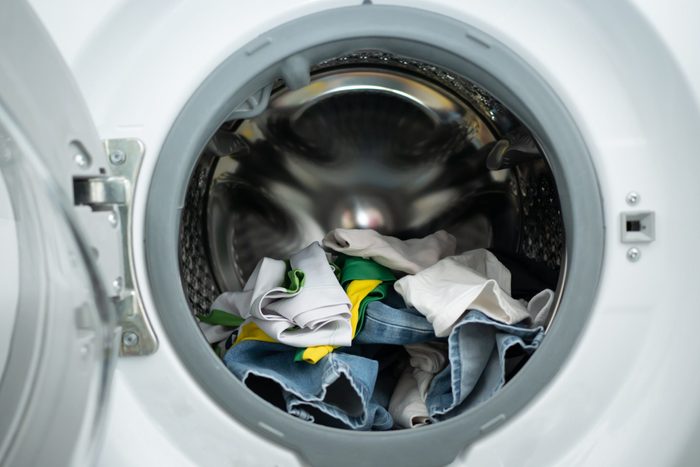
Clothes dryer repair guide
Most dryer problems can be fixed in an hour with a few basic tools and a continuity tester or multimeter, and you can do the work yourself with these simple instructions. Get the clothes dryer repair guide.
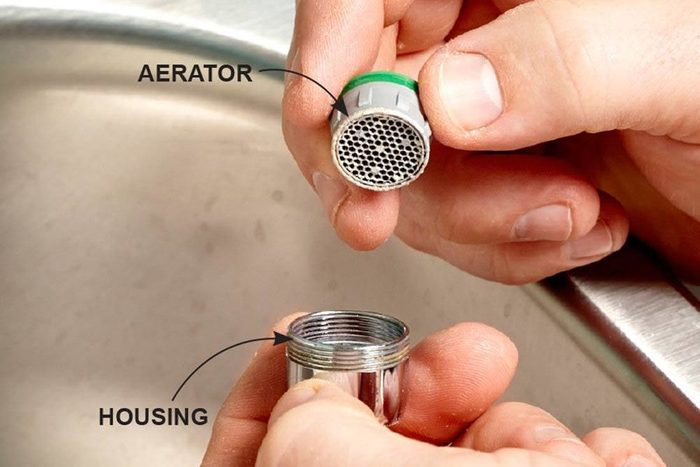
Restore free flow to a faucet
When a kitchen or bathroom faucet loses pressure or starts spraying to the side, it’s usually due to a dirty aerator screen. Luckily, cleaning a screen is an easy job. Start this fix by closing the drain plug (so you don’t drop parts down the drain). Then remove the aerator using a rag or masking tape so you don’t mar the finish with your pliers.
To remove the sand and other deposits, soak the aerator in vinegar, then scrub it with a toothbrush. This usually solves the problem. If you have to disassemble the aerator to clean it, lay out the parts in the order you removed them so you can reassemble them correctly.
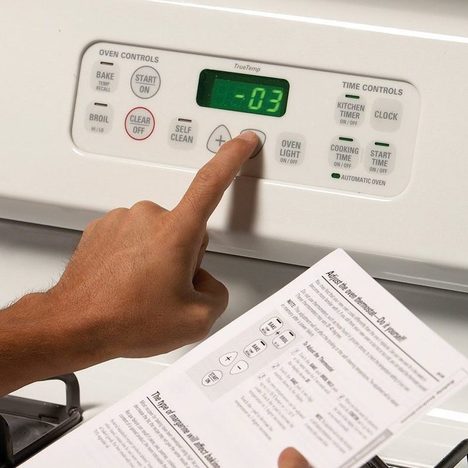
How to adjust oven temperatures
If your oven cooking times are off, recalibrate your oven temperature to match an accurate oven thermometer. The procedure is in your oven’s instruction manual—you know, that thing in your junk drawer!
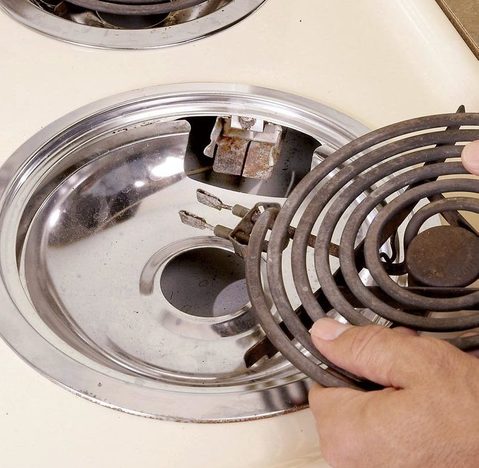
Electric stove repair
You can solve most electric range burner problems yourself and avoid the expensive service call. It’s quick and easy to replace a burner or bad burner socket. Make sure you’re not shortening the life of your stovetop with these common mistakes.
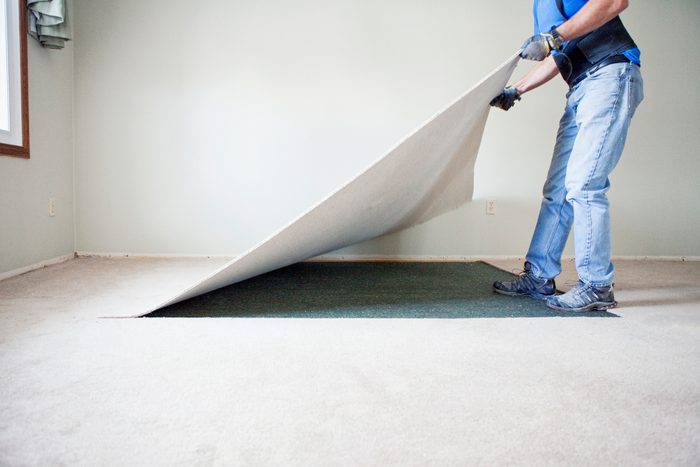
How to remove carpet yourself
Depending on where you live, an installer will charge $3 to $5 per square yard for tear-out. By removing the carpet from a 12 x 15-ft. room, you’ll save $60 to $100 for an hour’s work. Talk to your installer to find out exactly what you’ll save by doing it yourself. Find out which home improvement projects you should absolutely never DIY.
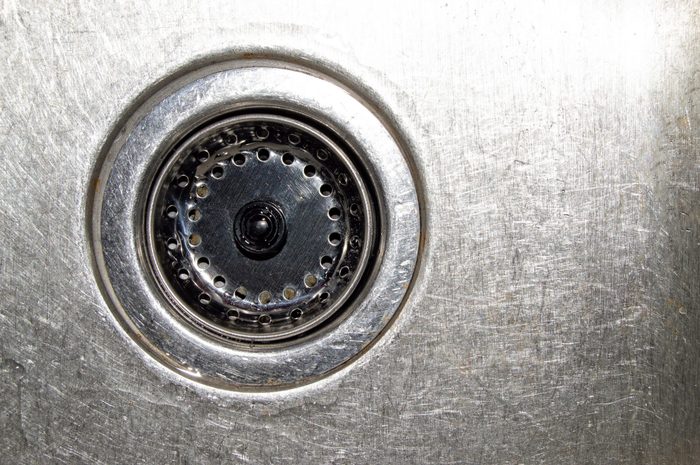
How to fix a clogged drain
Clogged drains usually happen at the most inopportune times. Keep a plunger and drain snake on hand to clear up most drain problems in less than an hour.
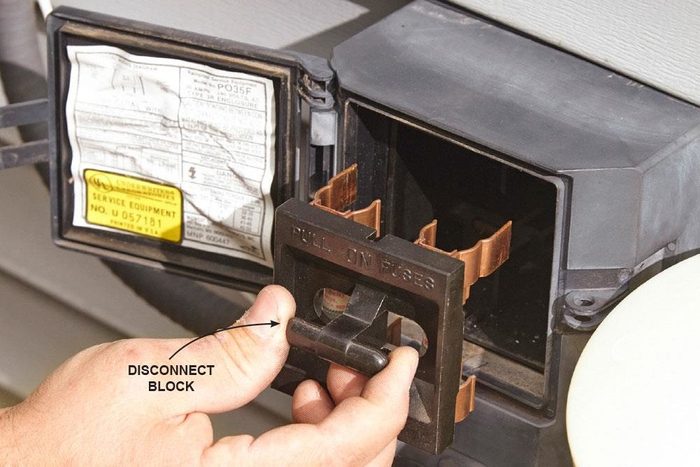
Cut the power to your A/C or waste energy and damage your compressor
Cut the power to your central air conditioner before the weather turns frigid. Your compressor could be damaged if your A/C accidentally gets turned on in low temperatures. Also, some A/C compressors have a crankcase heater to keep the oil warm. Running this heater in the winter is a waste of money, and the warmth could attract mice.
Flip off the breaker if the A/C compressor has a dedicated circuit, or rotate the disconnect block upside down into the ‘off’ position. The disconnect block is located in the small panel outside near the compressor. Re-energize the unit 24 hours before startup. That will give the oil time to reach operating temperature. Check out these common air conditioning mistakes you can’t afford to make.
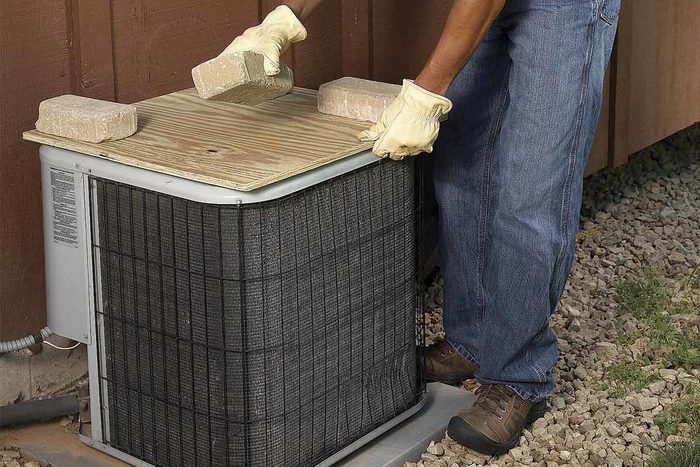
Protect the air conditioner
Even though the condensing unit is built for outdoor elements, it can still be damaged by falling icicles and other debris. You don’t need to invest in a waterproof cover (in fact many manufacturers recommend against it because it creates a warm space for critters). Just place a sheet of plywood held down by a few bricks on top and your AC should be ready to work again in the spring. Don’t forget! Your winter home maintenance checklist should also include removing and storing any window air conditioner units.
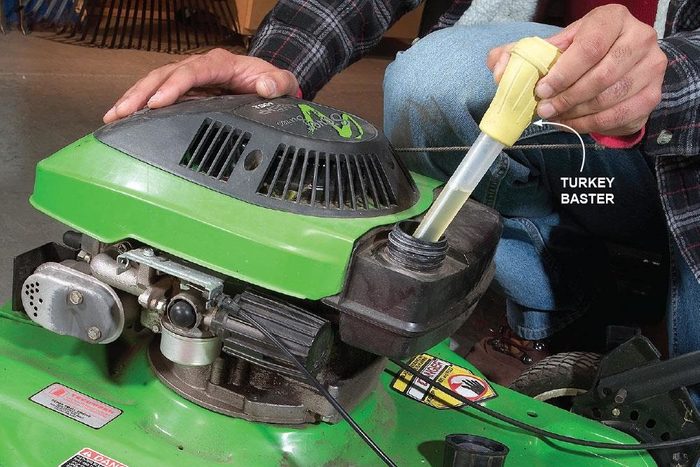
Swap out the gas in small engines or replace the carburetor in the spring
Standard gas at the pump can gum up a carburetor on a small engine in just a few months. I’ve had to replace a few carburetors for this reason. Now, when I know that it’s the last time I’m going to use a tool for the season, I suck out the gas from the tank with a turkey baster and run the engine dry. Then I add a bit of nonoxygenated gas, which has a longer shelf life but is too expensive to burn all year. I also add a splash of fuel stabilizer and run the engine for a while on the good stuff before storing it. —Josh Risberg, Contributing Editor, Family Handyman.
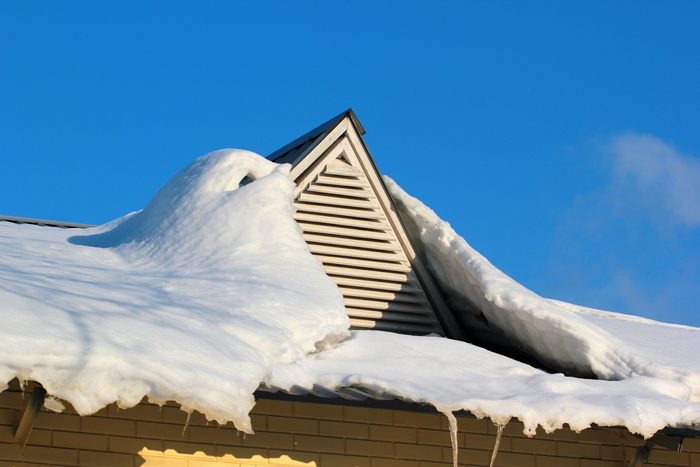
Clean attic venting or invite ice dams
Poor attic ventilation can cause ice dams in the winter months, increase cooling costs, create a home for mold and reduce the life of shingles during the dog days of summer. Over time, the vents located in your soffits and on some gable-ends, wall vents get clogged with dust and debris and lose their effectiveness. Clean them with a leaf blower or compressed air. You could use a pressure washer but stick to a couple quick passes because you don’t want to saturate the attic insulation with water. Clean the vents every few years, unless you live near a lot of trees with floating seeds, which can clog vents in one season. Next, if you know all of these things, you’re a genius homeowner.